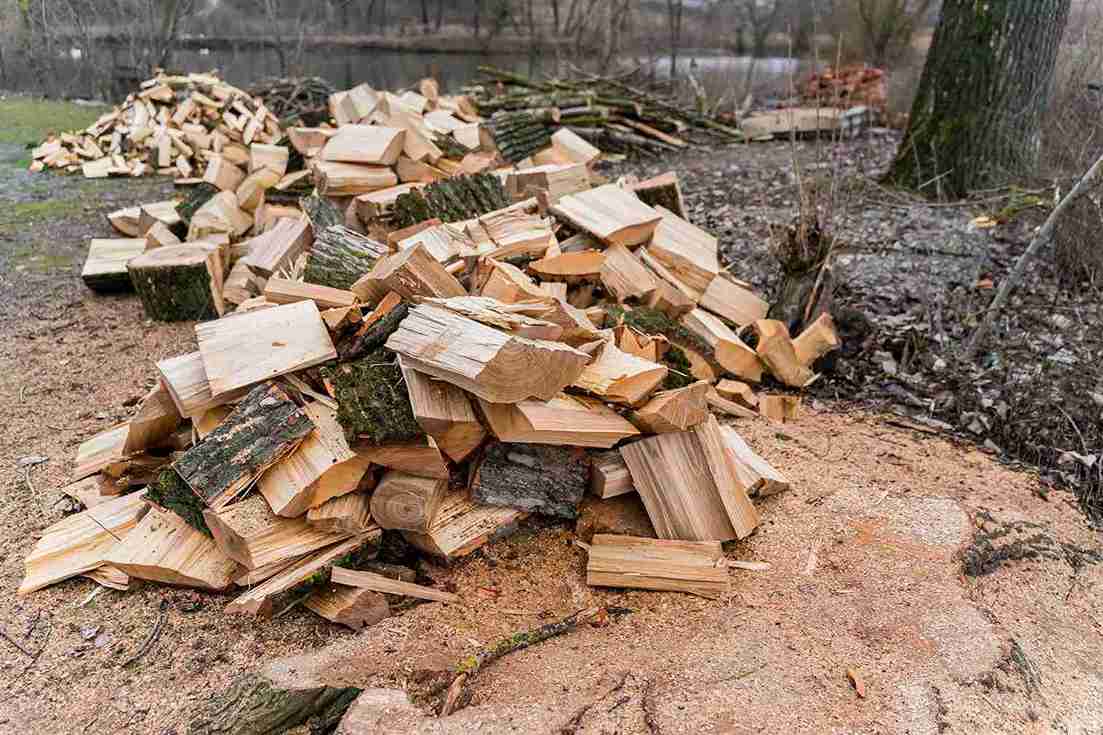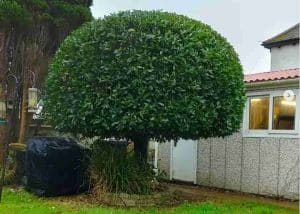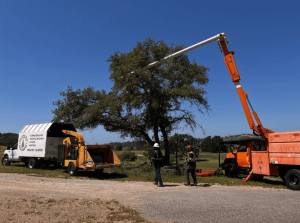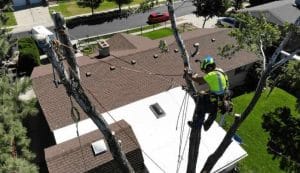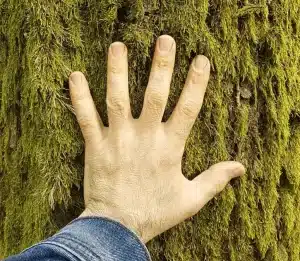The best things to do with wood chips after tree removal are to reuse them as mulch, compost, garden pathways, playground surfacing, erosion control, or even animal bedding. Instead of viewing wood chips as waste, think of them as a free resource that can improve soil, reduce weeds, and enhance your landscaping. In this guide, we’ll explore practical and creative ways to put your leftover wood chips to good use, saving you money while benefiting your yard and the environment.
Table of Contents
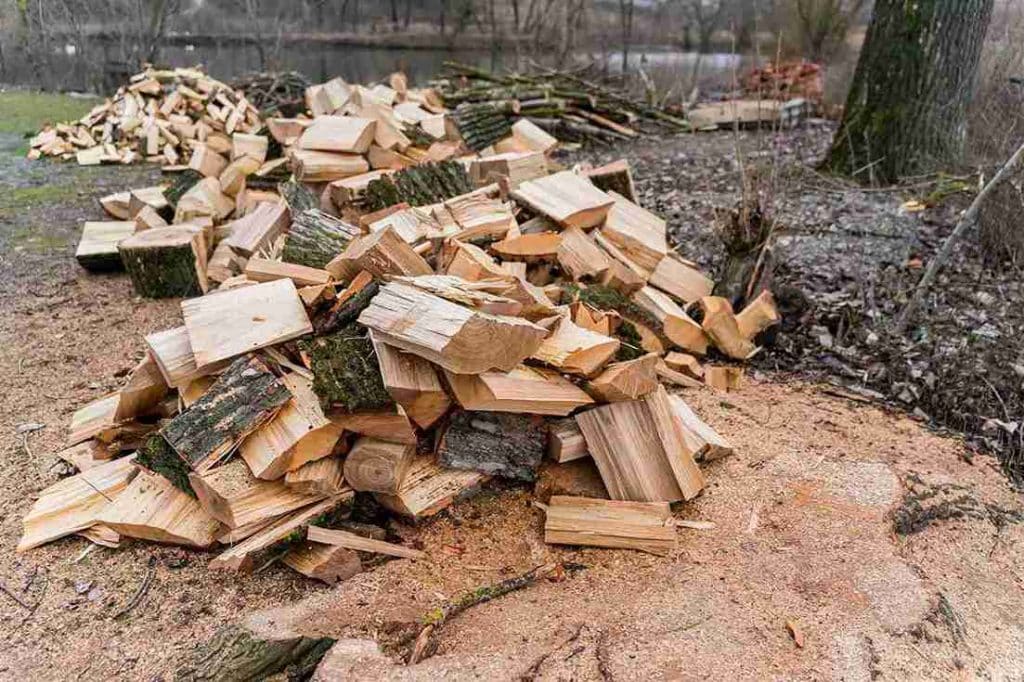
Why Wood Chips Shouldn’t Go to Waste
Many people don’t realize the value of wood chips and simply throw them away. However, wood chips can:
- Improve soil health
- Prevent weeds
- Conserve water
- Add nutrients back into the ground
- Provide attractive landscaping
By finding the right use for them, you save money on landscaping materials, reduce waste, and improve your outdoor spaces.
Using Wood Chips as Mulch
One of the best and most common uses for wood chips is mulching. Mulch protects soil, keeps it cool, and reduces weed growth. When you spread wood chips around trees, shrubs, or flower beds, they create a natural barrier that helps retain moisture while also improving the look of your yard.
To use wood chips as mulch:
- Spread them in a 2–4 inch layer.
- Keep them a few inches away from the base of plants to avoid rot.
- Reapply as they break down naturally over time.
This method is both eco-friendly and cost-effective since you don’t have to buy mulch from a garden center.
Composting Wood Chips
If you enjoy gardening, composting is another great solution. While wood chips take longer to break down than kitchen scraps or leaves, they’re rich in carbon, which balances the nitrogen from green materials like grass clippings and food waste.
Tips for composting wood chips:
- Mix them with high-nitrogen items like food waste or coffee grounds.
- Keep the pile moist to speed up decomposition.
- Turn the pile regularly to provide oxygen.
Over time, this mixture will create a dark, nutrient-rich compost that can be spread in gardens and landscaping beds.
Pathways and Walkways
Another creative way to use wood chips after tree removal is to create garden paths or walkways. Wood chips are soft to walk on, natural-looking, and can help prevent muddy paths in your yard.
Here’s how to do it:
- Clear the area and level the ground.
- Lay down a weed barrier fabric if weeds are a concern.
- Spread wood chips evenly in a thick layer, usually 3–4 inches deep.
Not only do pathways look rustic and inviting, but they also make it easier to move through your garden without tracking mud inside.
Playground Surfacing
If you have kids, you can use wood chips to create a safe and soft playground surface. Many public playgrounds already use wood chips because they provide good cushioning and reduce injuries from falls.
For safety:
- Use untreated wood chips only.
- Spread them 9–12 inches deep in play areas.
- Check and refresh the layer regularly to keep it safe.
This is an affordable alternative to rubber mats or expensive playground materials.
Erosion Control
If you live on a slope or an area prone to heavy rain, wood chips can help control erosion. By spreading them across bare soil, the chips slow down water flow, hold the soil in place, and prevent washouts.
This makes them especially useful on hillsides, around new landscaping projects, or areas where grass struggles to grow. Over time, as the chips break down, they’ll also add organic matter to the soil.
Animal Bedding
Farmers and pet owners often use wood chips as bedding for animals. They provide comfort, absorb moisture, and help control odors.
Good options include:
- Chicken coops
- Horse stalls
- Dog runs
- Small animal cages (using safe, non-toxic woods)
Always research which types of wood are safe for animals since some, like black walnut, can be harmful.
Weed Control in Walkways and Driveways
Wood chips also make a great weed barrier. By spreading them thickly in areas where you don’t want plants to grow, you can cut down on unwanted weeds. Many people use them around sheds, gravel driveways, or the sides of their homes to keep the area neat and low-maintenance.
Decorative Landscaping
Fresh wood chips can brighten up your landscaping, especially around trees and shrubs. Different types of wood can even add unique colors and scents. Using them decoratively creates a polished look that rivals store-bought mulch – without the cost.
Fuel and Firewood
Some people also use wood chips as fuel. While you can’t throw them directly into a fireplace like logs, they can be used in:
- Wood chip smokers for cooking
- Outdoor fire pits
- Biomass boilers (in some homes and farms)
If you have a smoker, wood chips can add flavor to meats and vegetables, depending on the type of tree they came from.
Raised Garden Beds
Wood chips are an excellent addition to raised garden beds. You can use them as a base layer at the bottom to improve drainage, then add soil on top. Over time, the chips decompose and add nutrients to the soil, creating a healthier growing environment.
Hugelkultur Gardening
Hugelkultur is a gardening method where logs, branches, and wood chips are buried under soil to create a raised bed. The wood slowly breaks down, releasing nutrients and holding water like a sponge.
This is a great long-term use for wood chips if you enjoy eco-friendly gardening practices.
Helping Local Community Gardens
If you have more wood chips than you can use, consider donating them to community gardens, schools, or local parks. Many of these groups use wood chips for landscaping, mulching, and pathways but often have to buy them. By donating, you not only get rid of your pile but also help others improve their green spaces.
What Not to Do With Wood Chips
While wood chips are useful, there are a few things you should avoid:
- Don’t pile them directly against tree trunks, as this can cause rot.
- Avoid using chips from diseased trees in gardens or compost.
- Don’t spread them in areas where water needs to drain quickly, since they can hold moisture.
By using them correctly, you can prevent problems and get the most benefit from your wood chips.
Environmental Benefits of Reusing Wood Chips
Reusing wood chips after tree removal isn’t just good for your yard – it’s also good for the environment. Instead of sending them to a landfill, you’re recycling natural materials, reducing waste, and cutting down on the need for manufactured products like store-bought mulch or plastic landscaping mats.
Conclusion: Turning Waste Into Value
If you’re wondering what to do with wood chips after tree removal, the good news is that you have plenty of options. From mulching and composting to erosion control, playground surfacing, and decorative landscaping, wood chips can add beauty, function, and value to your property. They save you money, improve soil health, and give back to the environment.
Instead of viewing them as waste, think of wood chips as a natural resource. Whether you keep them for your yard or share them with your community, they can serve a valuable purpose long after the tree is gone. And if you’d like expert guidance on how to use them most effectively, Decision Precision Tree Technicians can help ensure your wood chips are repurposed in safe, eco-friendly, and practical ways.
FAQs
What is the best way to use wood chips after tree removal?
The best way to use wood chips is as mulch around trees and garden beds. This saves money, improves soil health, and gives your yard a clean, professional look.
Can wood chips be used for composting?
Yes, wood chips are great for composting when mixed with nitrogen-rich items like food scraps or grass clippings. They balance your compost pile and enrich the soil.
Are wood chips safe for children’s playgrounds?
Wood chips are commonly used in playgrounds because they create a soft, cushioned surface. Just make sure to spread untreated chips at least 9–12 inches deep for safety.
How can wood chips help prevent soil erosion?
Wood chips slow down rainwater flow, hold soil in place, and add organic matter over time. They are especially effective on slopes, hillsides, or newly landscaped areas.
Can I use wood chips as animal bedding?
Yes, wood chips work well in chicken coops, horse stalls, and dog runs. However, avoid toxic woods like black walnut. Many pet owners rely on this affordable option.
What should I avoid doing with wood chips?
Never pile wood chips against tree trunks, don’t use chips from diseased trees in gardens, and avoid placing them where water must drain quickly since they hold moisture.
